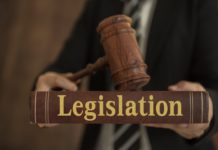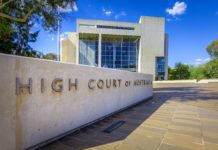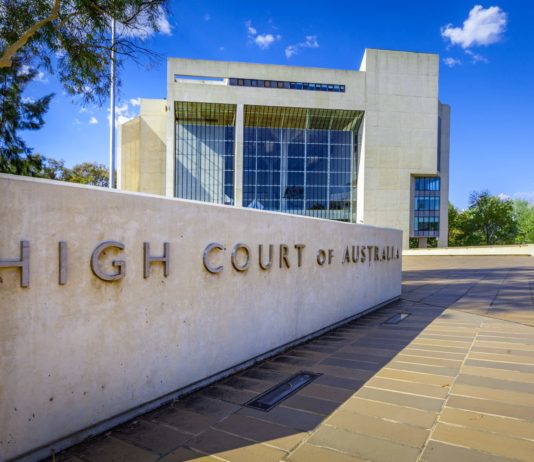“Encouraging” migration litigation
Federal Court. Section 486E of the Migration Act 1958 (Cth) provides that a person must not "encourage" the commencement or continuation of migration litigation if the case "has no reasonable prospect of success". Section 486F provides that a court may make a costs order against a person who breached s 486E. Can it be said that a "lawyer’s conduct in formulating the grounds, filing the notice of appeal and certifying the grounds as having reasonable prospects of success, whilst asserting an entitlement to charge fees for legal services for doing those things are together sufficient to support an inference that a legal practitioner has “encouraged” the client to commence and continue the litigation in the requisite sense"?
Appeal: time of lifting the bar or TOA?
Federal Court (Full Court). In Jul 2017, Minister determined that s 46A bar be lifted for TPV or SHEV if: a) a similar determination had been made relating to UMA's parent; and b) any application by the parent was made by 1 Oct 2017; and c) that application has not been refused and finally determined. Was the latter criterion to be satisfied by reference to Jul 2017 or the time of the SHEV application? We also summarise the court's views on the requirements of procedural fairness concerning s 46A.
Apprehended bias & going behind acquittal
Federal Court (Full Court). Was it open to the Minister to seek to persuade the Tribunal that the Appellant had engaged in the conduct that constituted the offence of which he was acquitted? In other words, could the Tribunal "go behind" the acquittal? In a case which is concerned with a claim of apprehended bias based upon irrelevant but prejudicial material being before the decision-maker, are the reasons given for the decision relevant to determination of whether a claim apprehended bias is made out?
Cl 13.1.2(1) of Direction 79: “cumulatively”
Federal Court. What does the requirement to consider the two limbs in cl 13.1.2(1) in Direction 79 "cumulatively" mean? If the Tribunal considers the two limbs in cl 13.1.2(1) in sequence before proceeding to consider them together and in combination, does it follow that it did not consider them "cumulatively"?
s 116(1)(e)(ii): mandatory considerations
Federal Court. In the context of s 116(1)(e)(ii), can it be said that submissions to the Tribunal, viewed as a whole, are a mandatory relevant consideration, but not every aspect of those submissions can be so described? If so, for the purpose of determining whether an aspect of those submissions is a mandatory relevant consideration, is the fundamental question the importance of that aspect to the exercise of the Tribunal’s function, which will depend on the nature of the material and the circumstances of the case?
No longer an Unauthorised Maritime Arrival?
Federal Court (Full Court). Generally speaking, if a protection visa is refused, the IAA (not the AAT) has jurisdiction to review the refusal if the applicant "is" an Unauthorised Maritime Arrival (UMA). Can a person cease to be a UMA upon the grant of a visa? Does the the judgement of the plurality of the High Court in AUS17 setting out the sequence in which the IAA should approach the tasks of assessing new information for the purposes of s 473DD provide a mere guidance?
Can cl 14.2(1)(a) weigh against applicant?
Federal Court. Do all the factors under cl 14.2(1) of Direction No 79 fall into those that generally weigh in favour of revoking the cancellation of an applicant’s visa? Did the Tribunal misinterpret cl 14.2(1) by finding that “overall”, the short time the applicant had contributed to the Australian community “balance[d]” his family ties in Australia?
Can covid-19 be basis to non-refoulement obligations?
Federal Court. Does a judicial review applicant need to provide extended written or oral submissions on a topic for it to be sufficiently clear that a serious representation is being made? Is it open to the Tribunal to ignore a claim made pursuant to s 501CA(4), on the basis of the lack of supporting evidence provided to support that claim? Could the risk of infection from covid-19, when weighed with other factors, provide “another reason” for revoking the visa cancellation within s 501CA(4), depending on the circumstances of the case?
Can s 501(2) power be enlivened twice based on same circumstances?
High Court. Can the discretionary power conferred by s 501(2) of the Migration Act 1958 (Cth), having once been enlivened by circumstances leading to a failure to pass the character test and exercised by the Minister or a delegate or re-exercised by the Tribunal on review not to cancel a visa, be re-enlivened by those same circumstances? Can the power be re-enlivened by different circumstances?
AAT required to disregard entire hearing due to interpreting issues?
Federal Court. AAT convened 3 hearings: 1st was adjourned shortly after starting; 2nd was adjourned after 2.5 hours due to concerns about quality of the English / Tamil interpreting; 3rd was the substantive one. In its decision, AAT said it gave the 2nd hearing "little weight", given the interpreting concerns. Did Division 4 of Part 7 of the Migration Act 1958 (Cth) require AAT to disregard the entirety of the evidence at 2nd hearing?





















